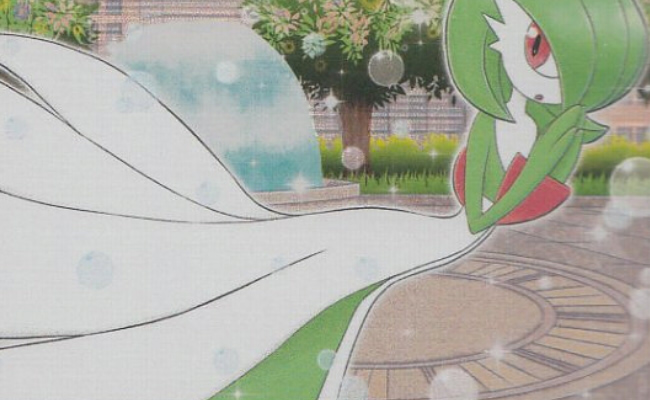Pitching a fusion of Darwinism and cock fighting and tied in with a catch phrase egging on 100% elitism, Pokémon has somehow managed to become one of the most popular game series of all time. Although intended for kids 10+, there’s plenty of elements in the Pokémon world that make for good nightmare fuel. While many Pokédex entries are riddled with creepy trivia, there are some direct elements that make the game lean towards the horror genre. With the release of Pokémon Black and White 2 fast approaching, here are five WTF features to get you refreshed on the world.
5. Pokémon Can be Killed…and Come Back to Haunt You
On the S.S. Anne, you face off against your rival’s team of Pidgeotto, Raticate, Kadabra, and the second stage of whatever starter your rival picked. The next time you see him? He’s missing his Raticate and visiting a grave in Lavender Tower. He even chastises you for visiting and challenges you on the spot, since all of your Pokémon look alive. Along with that, Gengar’s design looks awfully similar to another Pokémon’s…in fact, it looks like a exactly like a purple, spiky version of Clefable. The ghost Pokémon is likely a dead Clefable back to play more tricks on unsuspecting trainers.
4. Battle VS Wally
In Ruby and Sapphire, you run into a sick kid named Wally, help him catch his first Pokémon, encourage him to go on an adventure…and then promptly beat him up whenever you run into him. After giving him a purpose in life again, you battle him seriously and wipe the floor with him each time you meet. And why is it so important to beat down a terminally ill child? To be a Pokémon master, of course.
3. No One Knows How Pokémon Breed
Forgiving the old man for not explaining the details of sex and reproduction to a ten-year-old kid, there’s still a lot of questions surrounding the breeding part of Pokémon. In example, how does Cubone hatch with its dead mother’s skull attached? The Marowak you bred is not dead, so how on earth did that happen? How is Kangaskhan born with a baby already in its pouch? How do six eggs pop out of one when Eggsecute hatches? And how on earth (or Johto, or Kanto, or Sinnoh…and so on) do male single-gender Pokémon even survive in the wild? These are questions the game doesn’t answer, and probably never will.
2. Pokémon are a Delicacy
Although animals other than Pokémon exist in the Pokémon universe, the first few games heavily implied that Pokémon were a major food source. Slowpoketails were outlawed, but they still fetched an impossibly high price on the black market and were considered a delicacy. Magikarp equates to typical fish in our own world, and are shown several times in the anime to be edible by both humans and Pokémon. There are also plenty of Pokémon who grow food on themselves, including Tropius, Grotle, and Shuckle all grow fruit or nuts that can be digested by human and Pokémon alike. The strangest of all are Paras and Parasect—their mushrooms are used to make potions, but said mushrooms are also implied to control the creature. If you remove the mushroom from Parasect, there is nothing left to control the Pokémon, and it probably dies. Its alternative lifestyle with humans is battling constantly until it is knocked out or dies. This is in a world where Pokémon seem to be on par with humans as far as their intelligence is concerned.
1. The First Games Takes Place After a War
Since it’s peacetime, it’s hard to notice the subtle cues that show that the Pokémon world was once wracked by war—but in the first game, you have no father, your neighbor is an orphan, and the world is full of peril and mock-battles. Lt. Surge talks about his time in the war, and how electric Pokémon saved his life. The teams of criminals in each region are just remnants of the old world. Hospitals and training facilities are everywhere, and the other regions of the world (which weren’t unified before the war) are beyond the knowledge of each region’s researchers, explaining why Oak would not talk about the Pokémon of his home region. Using Pokémon as tools is not only commonplace but also essential for keeping the peace—it was probably their power that ended the war in the first place.



Good article!